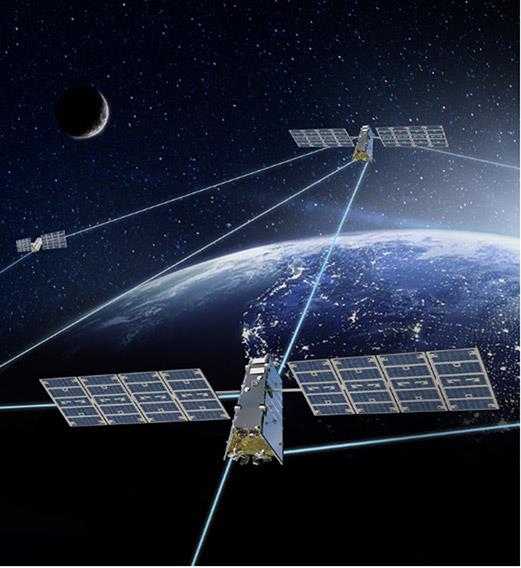31 December 2024

Yanniv Betito, EMEA Regional Vice President of Sales and Business Development, Telesat
To the outside world, much of Africa – especially the sub-Saharan – is a remote continent rich in natural beauty and resources but light on the technological progress that many countries take for granted. That perception is increasingly outdated: the region’s technology economy is seeing significant growth, with a sharp rise in mobile services penetration, innovative public-private partnerships, and investments in information and communications technology (ICT) leading the way. The World Trade Organization (WTO) even projects that African digital service exports could reach around $74 billion between 2023 and 2040, with annual growth exceeding 7%.
The region, however, still faces challenges in the form of underdeveloped ICT infrastructure and resources, and a lack of online connectivity: 57% of sub-Saharan African residents live in rural areas. The African Development Bank Group reports that over 640 million Africans have no access to energy, so the electricity access rate is the world’s lowest at just over 40%. Only 37% of Africans are connected to the internet, compared to 67% of the world’s population.
Yet given the diverse and challenging terrain – including an abundance of large mountains, deserts, and dense forests– efforts at terrestrial connectivity often pose prohibitive logistical and cost challenges. Fortunately, advanced satellite communication (SATCOM) is emerging as a viable and affordable option.
Changing the game
Previously, SATCOM was approached as a last resort for reaching remote populations; it was considered too complex and slow to implement – and requiring too much satellite technology-specific expertise to successfully pull off. But this impression is rapidly shifting: African governments are expected to launch 72 satellites over the next five years with 28 in the next five years, representing $2.56 billion in manufacturing spending. Overall bandwidth demand in sub-Saharan Africa – including that for the satellite industry-utilizing C-band, Ku-band and wide-beam Ka-band – is expected to rise steadily through 2027, with frequent double-digit percentage growth rates year-over-year according to the Analysys Mason (previously NSR) Global Satellite Capacity Supply and Demand report, 19th Edition report.
Leading consulting firm Space in Africa attributes the continent’s increasing demand for satellite technology as rooted in government and industry recognizing space capabilities as critical tools for socio-economic development, national security, environmental monitoring, disaster management and infrastructure development.
There is exploding demand for communication satellites, which are essential for providing broadband and broadcasting services to serve businesses, citizens and government to foster economic growth and social well-being. In fact, Africa’s growth rate of fixed broadband subscriptions were among the highest in the world at 11% – compared to 7% globally. And, there is plenty of room for additional growth, as Africa’s 12% fixed broadband penetration rate shadows the global rate of 63%. SATCOM’s ease of deployment could contribute and/or accelerate the adoption of satellite connectivity.
The introduction of low Earth orbit (LEO) satellite networks, fueled by ubiquitous, high-throughput, low-latency connectivity, and coupled with disruptive pricing, are entirely changing the space-based connectivity equation. A key advantage of LEO technology lies in its ability to provide ‘virtual fibre’ backhaul connectivity to extend the reach of non-terrestrial networks (NTNs) to remote or underserved areas where it is difficult or cost-prohibitive to deploy fibre.
The low latency connectivity of LEO networks means telecommunications service providers will be able to provide SD-WAN and IP services, cloud connectivity, and advanced applications beyond the footprint of their core terrestrial networks. This, however, will depend on the frictionless integration of satellite connectivity. And that requires interoperability.
A standards-based approach
Previously, interoperability was not possible due to satellite networks’ proprietary characteristics. The deployment process was manual and labor-intensive, required in-house satellite expertise, and could extend over weeks or even months. This situation has changed significantly as several satellite operators and ground system providers adopt what are known as MEF standards.
MEF (formerly Metro Ethernet Forum) is a non-profit industry forum of technology providers seeking to develop standards, certifications and application programming interfaces (APIs) in empowering enterprise digital transformations. The Forum promotes the MEF Standards for Layer 2 Carrier Ethernet, which support interoperability among network operators (including satellite-based), service providers, vendors and customers.
“Bandwidth demand in sub-Saharan Africa – including that for the satellite industry-utilizing C-band, Ku-band and wide-beam Ka-band – is expected to rise steadily through 2027, with frequent double-digit percentage growth rates year-over-year.”
Leveraging MEF standards unlocks the potential of terrestrial and NTN service orchestration. NTNs need to be fully API-driven and require standards-based automation between ecosystem players at both business and operational levels. MEF has developed standards-based Lifecycle Service Orchestration (LSO) business and operational process APIs that uniquely provide the high fidelity, plug-and-play interoperability, and extensibility required by service providers to ‘invest once’ and efficiently scale implementations with many partners and services. In this way, Telecom service providers will now deliver standard connectivity using Carrier Ethernet services over satellite in the same way that they deliver all their other enterprise services.
Beyond just MEF, there is increasing support for adopting standards-based approaches to build next-generation SATCOM capabilities while containing costs. Industry and government leaders must commit to partnering on standards that will more effectively and efficiently pave the way for satellite innovation.
One important partnership is already underway: in July 2023, the Global Satellite Operators Association (GSOA) announced that satellite and mobile industry professionals have been working for years to bring satellite into mobile standards, resulting in the 3rd Generation Partnership Project (3GPP). 3GPP will support the use of non-terrestrial networks (NTN) in these standards, to enable full interoperability between satellite and terrestrial – including mobility procedures across both network components. This will allow mass-market smartphones and IoT devices to connect seamlessly with satellite networks when out of range of terrestrial connectivity.
Several telecom operators have already signed agreements with satellite constellation operators to support direct-to-device service. There is a wide range of capabilities utilizing both terrestrial and mobile satellite spectrum enabled through these partnerships. For example, AST Space Mobile has partnered with AT&T and Verizon to provide voice and data services; Starlink D2D is working with T-Mobile on direct to device SMS and messaging; Apple is partnering with GlobalStar on emergency and iMessaging; Lynk has preliminary partnerships with 40 mobile network operators.
The project will especially benefit rural, unserved and underserved areas – including sub-Saharan Africa – in an effort to dramatically increase online access. In the near future, 3GPP is expected to improve uplink and downlink connectivity between satellites and mobile devices, while enhancing mobility between non-terrestrial and terrestrial networks through smoother, quicker handovers.
Reaching the edge

MEF standards-based satellite networks are also needed to support effective edge computing – where devices in remote locations process data at the ‘edge’ of the network. As more devices are used in industries that comprise a large part of the African economy, more edge-processed data will need to be transferred either to other edge devices or to another remote location (such as a central or headquarters facility).
Agriculture is a prime example. Low cost, sensor-based Internet of Things (IoT) devices are poised to increase agricultural production, with millions of devices across enormous tracts of land generating volumes of data on water usage, nutrition density and other environmental factors affecting crop growth. As more African farms will benefit from implementing autonomous IoT, applications like on-the-ground video surveillance and tracking the status of new autonomous farm vehicles in motion will greatly expand high data rate satellite broadband implementations.
Mining is another data-intensive sector that is increasingly reliant on IoT devices and on-site video for real-time operational analysis, safety, monitoring equipment maintenance and other efficiency requirements. African mining companies will need to backhaul those vast amounts of data to a collaborative edge (including multiple other networked edge devices), or even to a cloud or data center environment.
Yet getting adequate internet coverage to rural and remote locations is challenging and expensive; costly fibre-based solutions will simply not be an option. Fortunately, the growth of advanced LEO satellite constellations now offers the capability to enable a space-based mesh network to support modern, cloud services with guaranteed resiliency. Such networks will deliver carrier ethernet-level performance at the lowest latency and highest speed that large-scale edge computing environments require. And that level of connectivity can support collaborative edge operations anywhere across the African continent.
A dynamic and promising future
There is great opportunity for tech industry companies and other enterprises to drive dramatic growth throughout the vast and diverse African economy. To take the next, critical steps of a digital transformation, SATCOM providers are more than ready to collaborate with government and telecommunications partners throughout Africa to develop and implement standards-based approaches. With this, Africa will emerge as an increasingly connected source of innovation – and inspiration.







